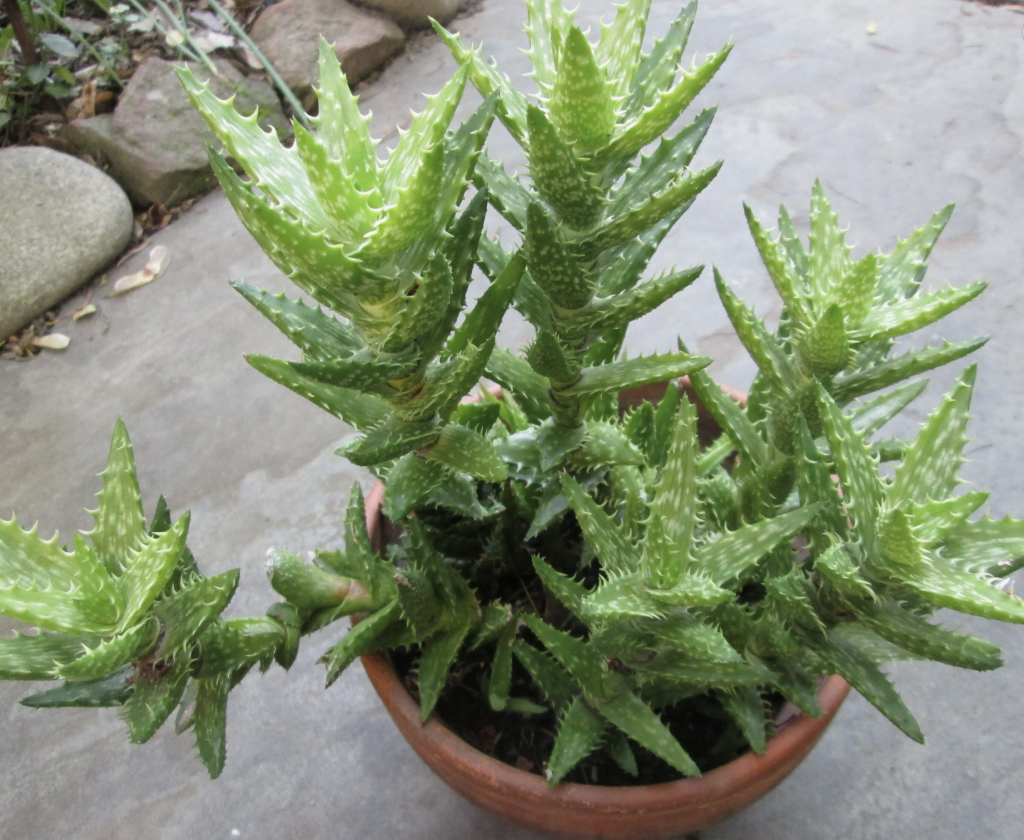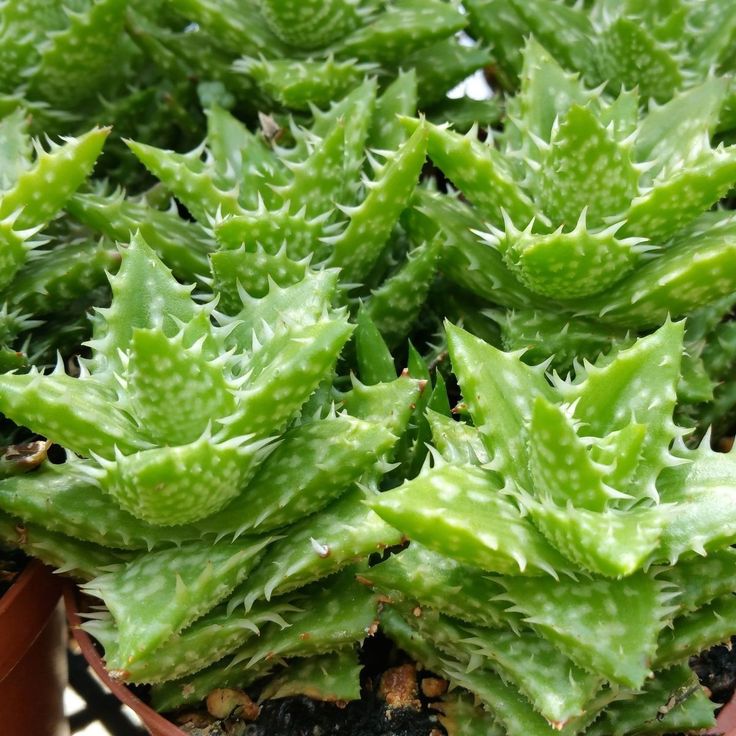Tiger Tooth Aloe Overview
As a seasoned houseplant enthusiast, I’ve always been captivated by the striking appearance and resilience of Aloe Juvenna, commonly known as the Tiger Tooth Aloe. This succulent, native to Kenya, has carved out a special niche in my indoor garden collection. In this extensive care guide, I’ll share why the Tiger Tooth Aloe makes an excellent houseplant, along with its botanical information and other useful tips for thriving growth.

Why Choose Tiger Tooth Aloe as a House Plant
Unique Aesthetic Appeal
The “Tiger Tooth Aloe” is an exquisite plant, notable for its vibrant green leaves adorned with white spots and edged with reddish-brown teeth, resembling a tiger’s jaws. When provided with enough sunlight, the leaves can turn a reddish hue, adding to its visual appeal. It’s a plant that doesn’t just blend in; it makes a statement.
Easy to Grow and Care For
From my experience, one of the significant advantages of this succulent is its ease of care. It’s perfect for both beginners and seasoned plant lovers. Tiger Tooth Aloe thrives in typical indoor environmental conditions, requiring minimal attention while offering maximum aesthetic reward.
Botanical Information
Classification and Structure
Aloe Juvenna is part of the Asphodelaceae family, closely related to the well-known Aloe Vera. This plant typically grows in a rosette pattern and can reach up to 12 inches in height. Its thick, fleshy leaves store water, an adaptation to its native arid environments in Kenya. Growth Habit and Flowering
Under optimal conditions, Tiger Tooth Aloe can produce a flower stalk with tubular coral-red flowers, a sight to behold. However, flowering is rare in indoor settings, but not impossible with the right care and environmental factors.
Indoor Care Guide for Tiger Tooth Aloe Succulent
Optimal Sunlight Requirements Aloe Juvenna thrives in bright, indirect sunlight. As a succulent, it is adapted to soak up the sun, so placing it near a window that receives several hours of sunlight is ideal. However, be wary of too much direct sunlight, especially during the harsh midday hours, as it can cause the leaves to scorch.
Adapting to Indoor Lighting Conditions In scenarios where natural light is limited, which is a common challenge in indoor gardening, I recommend using grow lights. A good quality LED grow light, positioned a few inches above your Tiger Tooth Aloe, can effectively substitute for natural sunlight. Water: Balancing Moisture for Health
Watering Techniques and Frequency Watering Aloe Juvenna requires a delicate balance. Overwatering is a common pitfall, so it’s crucial to let the soil dry out completely between waterings. Typically, watering once every two to three weeks is sufficient, but this can vary depending on the humidity and temperature of your home. The soak-and-dry method works best, thoroughly drenching the soil and then allowing it to dry out.
Signs of Over or Underwatering Keep an eye out for indications of improper watering. If the leaves start to shrivel or wrinkle, it’s a sign of underwatering. On the flip side, soft and mushy leaves often point to overwatering, which can lead to root rot. Soil: Creating the Perfect Foundation
Ideal Soil Mix for Aloe Juvenna The right soil mix is critical for the health of your Tiger Tooth Aloe. A well-draining succulent or cactus mix, easily available in garden centers, is ideal. You can enhance drainage by adding sand or perlite to the mix. This ensures that excess water drains quickly, preventing root rot.
Repotting Tips Repotting every two to three years or when the plant outgrows its current pot is recommended. Always choose a container with drainage holes and fresh succulent mix when repotting. Temperature and Humidity: Maintaining a Suitable Environment
Optimal Temperature Range Aloe Juvenna prefers warm temperatures, ideally between 60°F to 80°F (15°C to 27°C). Protect it from drastic temperature changes and avoid placing it near cold drafts or heat sources.
Humidity Requirements While Tiger Tooth Aloe is tolerant of a range of humidity levels, it does best in moderate to low humidity. If your home is particularly dry, especially in the winter months, there’s usually no need to add additional humidity. Fertilizer: Nutritional Support for Growth
Fertilizing Your Aloe Juvenna While Aloe Juvenna isn’t a heavy feeder, occasional fertilization can help support its growth. Use a balanced, water-soluble fertilizer, diluted to half strength, once in the spring and again in the summer. Avoid over-fertilizing, as this can harm the plant.
Signs of Nutritional Deficiencies or Excess Be attentive to the plant’s response after fertilizing. If you notice the leaves turning yellow or signs of burn, it could indicate over-fertilization. Conversely, slow growth or pale leaves may suggest a need for more nutrients.
In my experience, caring for Aloe Juvenna, is a rewarding endeavor for any indoor gardener. By providing the right balance of light, water, soil, temperature, and nutrients, your succulent will not only survive but flourish, bringing a touch of nature’s resilience and beauty to your indoor space.

Growing Guide for Tiger Tooth Aloe
How to Propagate Aloe Juvenna
Starting from Offsets
Aloe Juvenna, like many succulents, produces offsets or “pups” that can be used for propagation. Here’s how to do it:
- Identify and Separate Offsets: Look for pups growing around the base of the plant. Using a clean, sharp knife or scissors, carefully separate the pup from the mother plant, ensuring it has some roots attached.
- Allow to Callous: Let the offset dry for a few days until the cut area forms a callous. This step is crucial to prevent rotting.
- Potting the Offset: Plant the calloused offset in a well-draining soil mix, typically used for cacti and succulents. Water sparingly until the pup establishes itself and begins to grow.
Leaf Cuttings Method
Although not as common, propagating Aloe Juvenna from leaf cuttings is also possible:
- Cut a Healthy Leaf: Choose a healthy, full-grown leaf and make a clean cut near the base.
- Dry and Callous: Let the leaf dry for a few days to allow the cut end to callous over.
- Plant the Leaf Cutting: Place the leaf-cutting on top of a suitable soil mix. With time and minimal watering, it should start to root and eventually grow into a new plant.
Potting and Repotting Aloe Juvenna
Choosing the Right Pot
For Aloe Juvenna, always select a pot with good drainage. Terracotta pots are ideal as they allow the soil to dry out more evenly, preventing root rot.
The Best Soil Mix
A well-draining soil mix is key for Aloe Juvenna. Use a commercial cactus and succulent mix or make your own by mixing potting soil with sand or perlite for increased drainage.
When and How to Repot
Repotting is typically needed every two to three years or when the plant outgrows its pot. To repot:
- Gently Remove the Plant: Carefully take the plant out of its current pot, shaking off excess soil and inspecting the roots for any signs of rot.
- Choose a Slightly Larger Pot: Repot into a slightly larger pot with fresh soil mix.
- Water After Repotting: Allow the plant to settle for a few days before watering to reduce the risk of root rot.
Pruning Aloe Juvenna
Why Prune
Pruning helps maintain the shape of your Aloe Juvenna and encourages healthier growth. It also allows you to remove any dead or dying leaves, keeping the houseplant looking its best.
How to Prune
- Use Clean, Sharp Tools: Always use sterilized pruning shears or scissors.
- Prune Sparingly: Cutaway only the dead or overgrown parts of the plant, being careful not to harm the healthy growth.
- Post-Pruning Care: After pruning, avoid watering immediately to allow the cuts to heal and prevent infection.
Pests and Plant Diseases
Battling Common Pests
Aloe Juvenna can fall prey to typical succulent pests such as mealybugs, spider mites, and occasionally aphids. Here’s how to handle them:
- Mealybugs: These pests appear as tiny white cottony masses on the plant. To combat them, I often use a cotton swab dipped in rubbing alcohol to dab onto the bugs, effectively removing them.
- Spider Mites: These are trickier to spot but look for fine webbing on the plant. A thorough spray with water or insecticidal soap can help get rid of them. Regular monitoring is crucial to catch these pests early.
- Aphids: While less common, they can infest your Aloe Juvenna. An application of neem oil or a gentle soap solution usually does the trick to eliminate them.
Dealing with Plant Diseases
Root rot is the primary disease concern for Aloe Juvenna, typically caused by overwatering. Ensuring a well-draining soil mix and a pot with drainage holes can prevent this issue. If root rot does occur, remove the plant from its pot, trim away the rotted roots, and repot in fresh soil.
Common Problems with Aloe Juvenna
Overwatering and Underwatering
The most common problem I encounter with Tiger Tooth Aloe is improper watering. Signs of overwatering include mushy, translucent leaves while underwatering will manifest as shriveled, dry leaves. It’s a balancing act: water only when the soil is completely dry.
Sunlight Issues
Another issue is inadequate or excessive sunlight. While Aloe Juvenna thrives in bright light, too much direct sunlight can scorch the leaves, causing them to turn brown. Conversely, insufficient light can lead to leggy growth. I recommend a spot with bright, indirect sunlight for optimal growth.
Temperature Stress
Tiger Tooth Aloe prefers a stable temperature range. It is not frost-hardy, so keeping it away from cold drafts in winter is essential. Similarly, during hot summers, ensure it’s not in a location where it could overheat.
In wrapping up, I can confidently say that the Tiger Tooth Aloe is a true gem for any indoor plant collection. Its striking appearance combined with its low-maintenance needs makes it a delightful choice for plant lovers of all levels. From my personal experience, providing the right balance of light, water, and soil will keep your Aloe thriving and transforming your indoor space with its unique beauty. It’s a plant that not only grows but also enriches your living space with its distinct charm.
Introduction
Nicki Mann, based in Portland, Oregon, is a good writer and houseplant enthusiast. With her background in environmental science, Nicki specializes in indoor gardening, focusing on sustainable and organic practices.
Experience
Her interest in houseplants began in her mid-twenties, leading to a career writing articles about indoor plant care and eco-friendly gardening for various websites.
Education
Nicki holds a Bachelor of Science in Environmental Studies from the University of Oregon, which underpins her approach to indoor gardening. She continually enhances her knowledge through horticulture and environmental sustainability workshops.
Personal Life
Nicki, an avid nature lover, enjoys exploring the Pacific Northwest's trails. She's active in community gardening and lives with her two rescue cats, who share her interest in her growing collection of houseplants.

